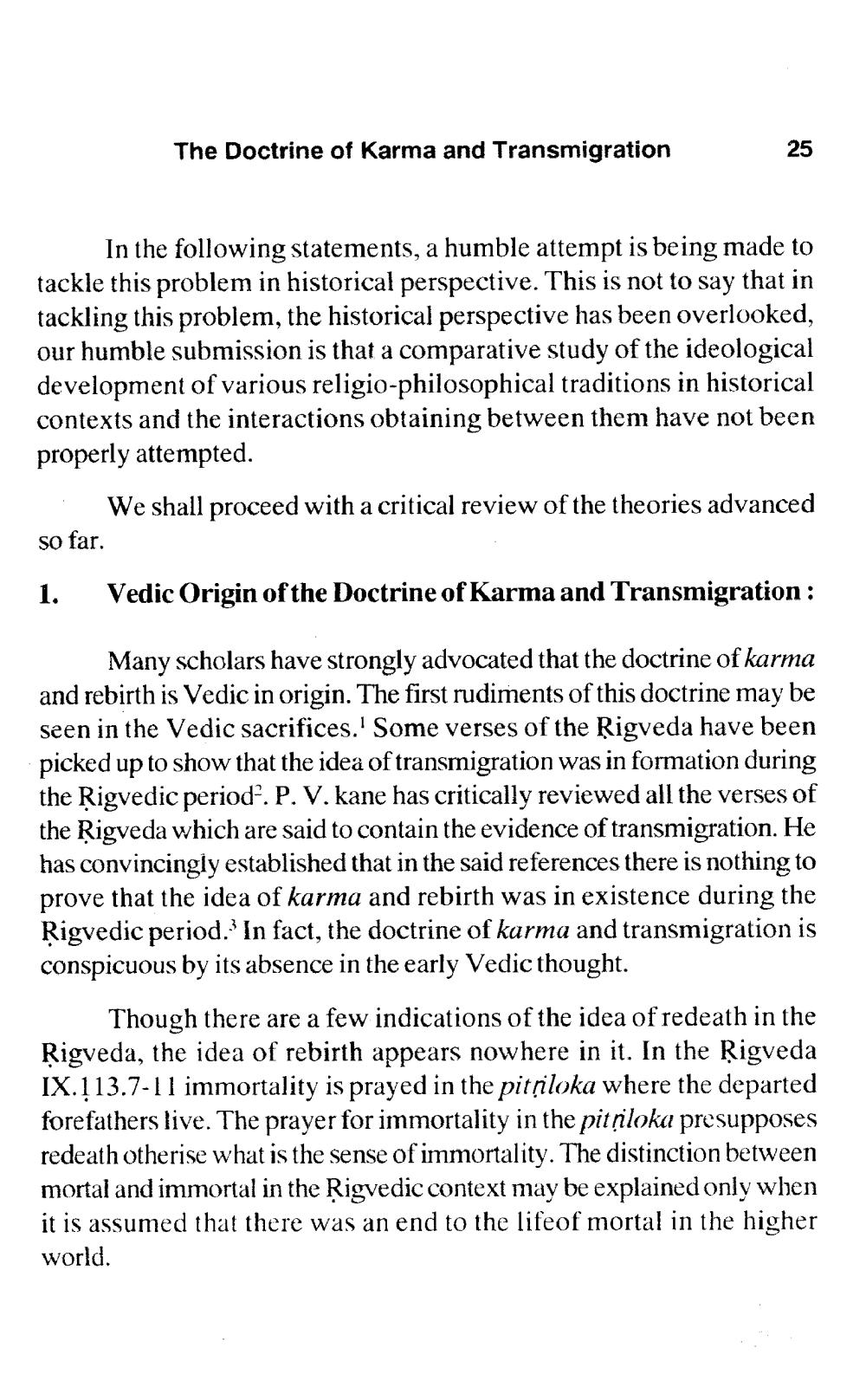________________
The Doctrine of Karma and Transmigration
25
In the following statements, a humble attempt is being made to tackle this problem in historical perspective. This is not to say that in tackling this problem, the historical perspective has been overlooked, our humble submission is that a comparative study of the ideological development of various religio-philosophical traditions in historical contexts and the interactions obtaining between them have not been properly attempted.
We shall proceed with a critical review of the theories advanced so far.
1.
Vedic Origin of the Doctrine of Karma and Transmigration:
Many scholars have strongly advocated that the doctrine of karma and rebirth is Vedic in origin. The first rudiments of this doctrine may be seen in the Vedic sacrifices.' Some verses of the Rigveda have been picked up to show that the idea of transmigration was in formation during the Rigvedic period. P. V. kane has critically reviewed all the verses of the Rigveda which are said to contain the evidence of transmigration. He has convincingly established that in the said references there is nothing to prove that the idea of karma and rebirth was in existence during the Rigvedic period. In fact, the doctrine of karma and transmigration is conspicuous by its absence in the early Vedic thought.
Though there are a few indications of the idea of redeath in the Rigveda, the idea of rebirth appears nowhere in it. In the Rigveda IX.113.7-11 immortality is prayed in the pitriloka where the departed forefathers live. The prayer for immortality in the pit ņloka presupposes redeath otherise what is the sense of immortality. The distinction between mortal and immortal in the Rigvedic context may be explained only when it is assumed that there was an end to the lifeof mortal in the higher world.




